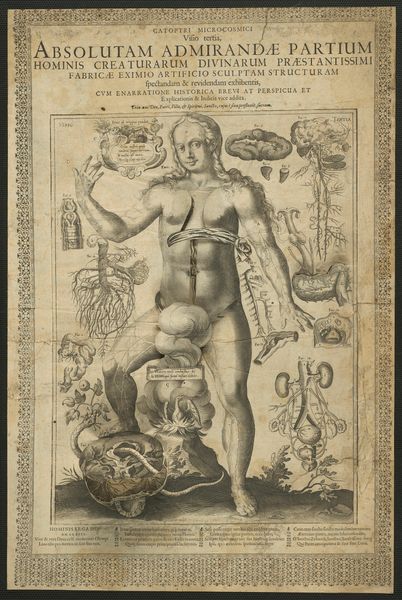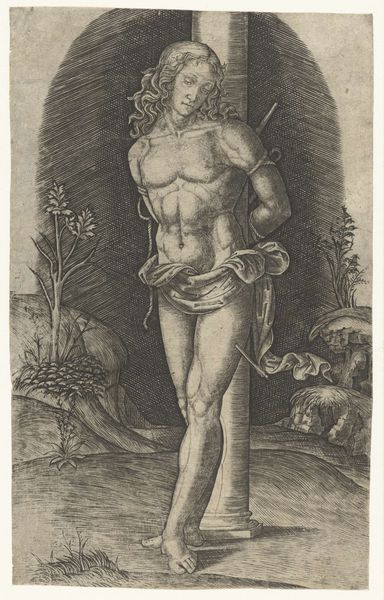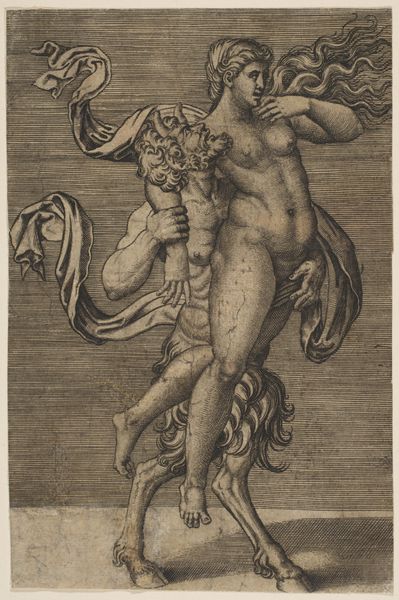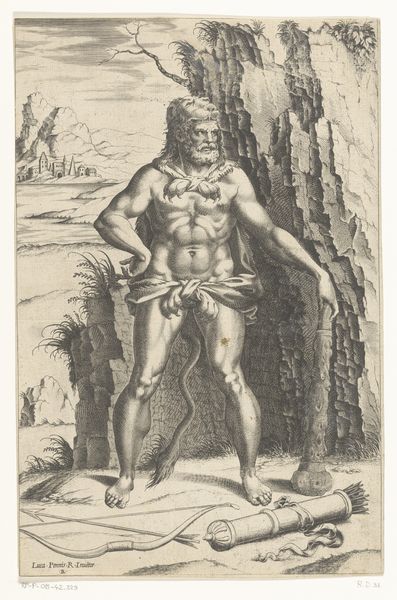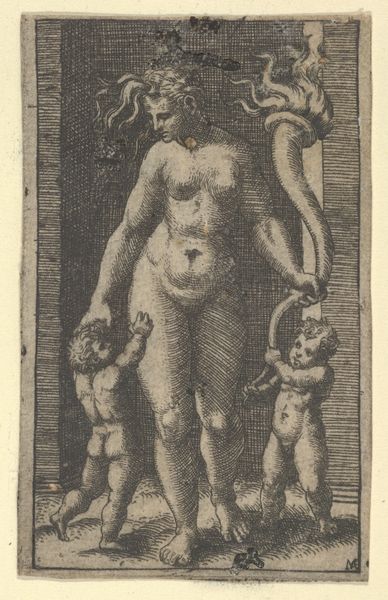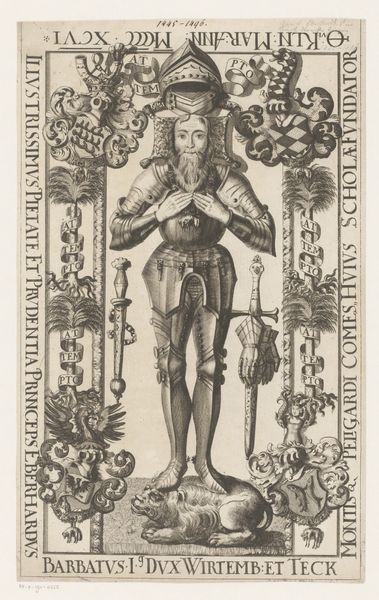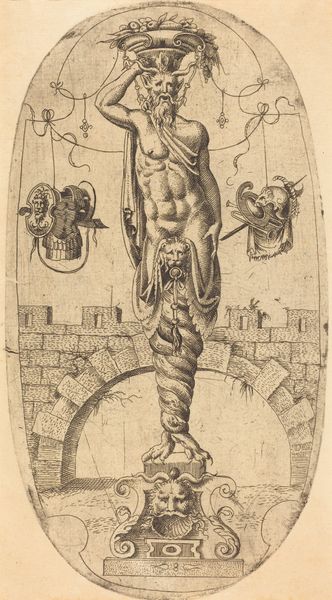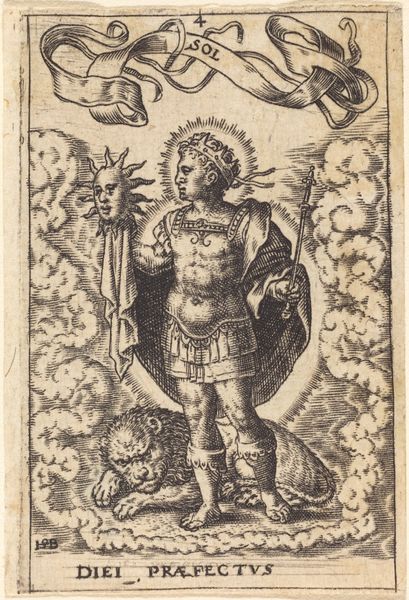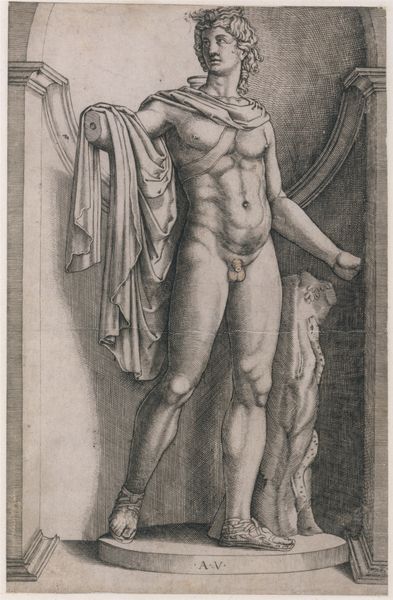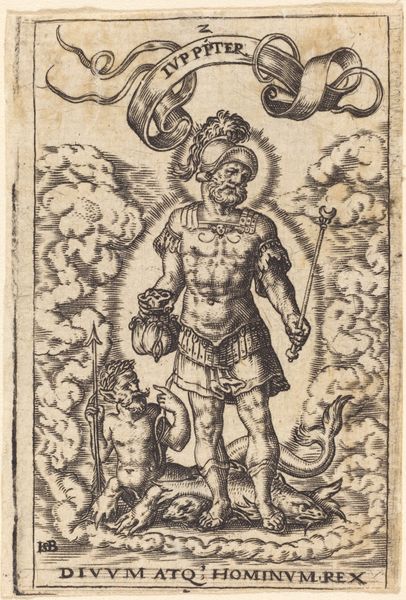
print, engraving
#
medieval
#
allegory
# print
#
figuration
#
northern-renaissance
#
engraving
#
erotic-art
Dimensions: height 395 mm, width 278 mm
Copyright: Rijks Museum: Open Domain
Editor: This engraving from sometime between 1540 and 1567, titled "De zeven hoofdzonden" or "The Seven Deadly Sins," really jumps out. The grotesque figure is part human, part animal, and just unsettling. How do you interpret this work? Curator: This piece, with its disturbing imagery, speaks volumes about the anxieties of the time. Consider the backdrop: The Northern Renaissance grappling with religious reform, social upheaval, and emerging capitalist structures. The grotesque, the erotic, even, are not simply about titillation; they serve as cautionary tales reflecting a deep-seated fear of moral decay, gender and societal transgression. How do you see the monstrous form connecting with ideas about sin? Editor: I see the connections in a literal way because there is grotesque nudity that resembles how a male body could be considered lustful but, if sin is also a social construct, it must mean more? Curator: Exactly! These images often served to reinforce existing hierarchies. Think about the role of women during this period. Were women regarded as more susceptible to certain sins, like lust or pride? And how might these images be read as a form of control? The artist creates a spectacle of deviance. But who defines that deviance? And for what purpose? Editor: So it’s not just about illustrating sin, but about power structures and social anxieties using this demonic image and religious narrative? Curator: Precisely! It uses the imagery of sin and punishment to maintain social order. By looking at the artwork, we’re given a lens into gender dynamics of the period. Editor: This has really changed my perspective, I’m realizing there's a whole conversation about control and who holds it, beneath this artwork! Curator: Agreed. Context gives so much. Seeing art like this invites us to constantly question how images operate to shape beliefs and regulate behaviors in any era.
Comments
No comments
Be the first to comment and join the conversation on the ultimate creative platform.
